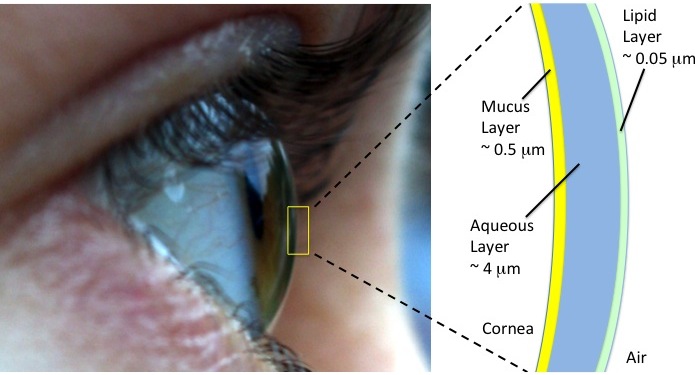- Nanoparticles through airway mucus
- Hydrogel-liquid interfaces
- Epithelial tissue morphogenesis
- Interfacial dynamics in complex fluids
- Cell mechanics, chemotaxis and collective migration
- Tear film breakup in healthy and infected eyes
(in collaboration with Harish N. Dixit of IIT Hyderabad and Ashutosh Richhariya et al. of the L. V. Prasad Eye Institute, Hyderabad, India)
In this IC-IMPACTS project, we study the flow pattern in the tear film in healthy eyes as well as its modification by eye diseases, and then use this understanding to develop a portable device for quick diagnosis of eye infection and dry-eye disease.

As shown in the schematic above, the tear film has a intricate structure. Each blink coats the ocular surface with a fresh tear film, which then drains under gravity and may break up. This drainage and breakup process offers clues about the health of the eye. Before an eye infection sets in, for example, bacterial colonies proliferate in the aqueous layer and modify the chemical makeup of the tear film. They may also attack the mucus layer and change the mucin concentration in the tear film. We have used computer simulations to study how the mucin profile in the tear film and the membrane-associated mucins affect the rupture time. The plots below depict the tear film shortly before its rupture, with the left showing the concentration of soluble mucin and the right the instantaneous velocity field in the tear film.

-
We then went on to examine how the gradual loss of membrane-associated mucin (MAMs) can reduce the tear-film breakup time. We uncovered a vicious cycle at work, with pathogen invasion causing the shedding of MAMs from the corneal surface (see schematic below), and the loss of MAMs inducing premature tear-film breakup, thus exposing the cornea to more external pathogens.
